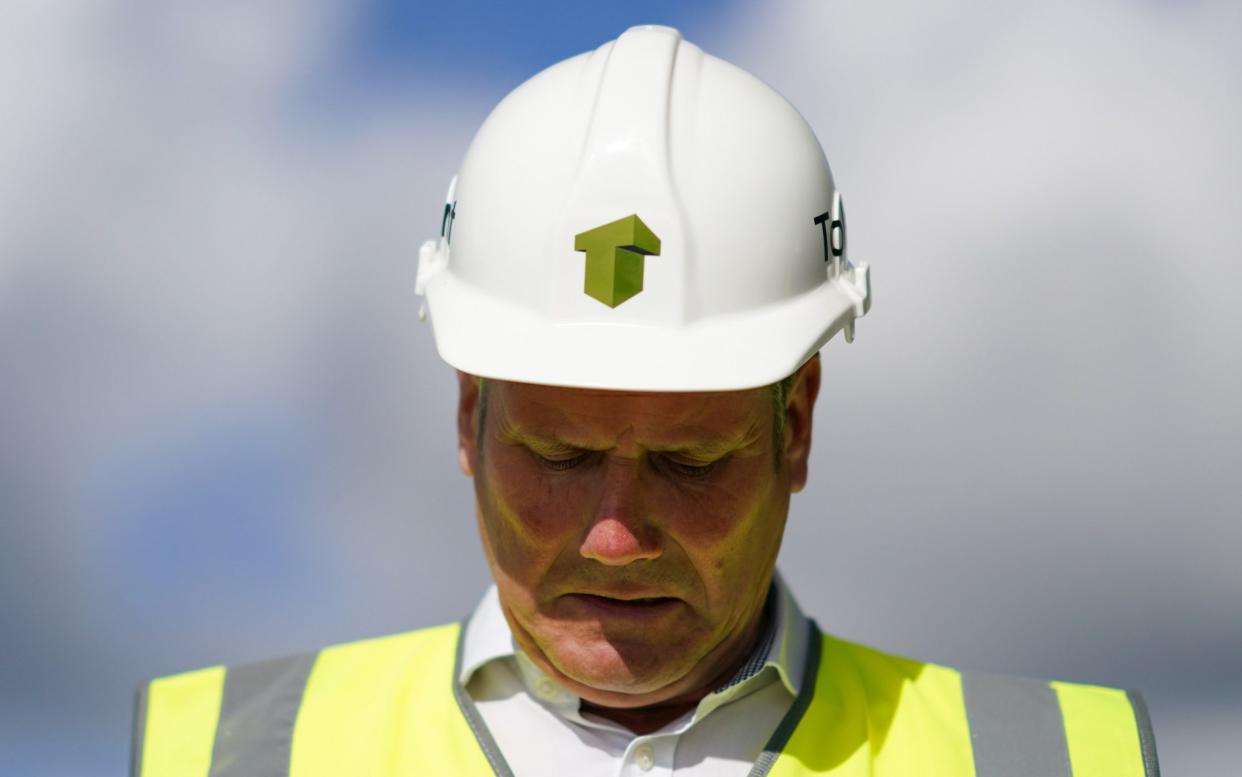Labour’s vague promises won’t solve Britain’s housing crisis

“The UK’s housing crisis is one of this country’s biggest barriers to growth”, says the Labour manifesto. Britain is indeed suffering from a chronic shortage of homes – which not only holds back our economy, but tears at society’s fabric.
Yet Labour’s proposals to expand housebuilding risk ushering in a new era of bureaucratic gridlock and stasis.
During the decade from 2010, just 1.1 million homes were built in the UK – far fewer than averages of 1.6 million over each of the 1980s, 1990s and 2000s. No fewer than three million homes were built per decade in the 1950s, 1960s and 1970s.
This construction slowdown is a major reason why house prices surged 53pc during the 10 years from 2012, while average wages rose just 19pc. That explains today’s unaffordability epidemic, with increasing numbers of young adults locked out of home ownership while facing soaring rents too.
A lack of homes helps explain why 18 to 34-year-olds currently pay more for accommodation and are less likely to be owner-occupiers than any generation since the 1930s.
In 1980, well over half of this age cohort were homeowners, often living with their children. Today barely one in five are in that position, with 18 to 34-year-olds now far more likely to still be living with their parents.
For much of an entire generation, then, a lack of housing is stymieing “personal growth”. Working hard to buy a home and start a family – an opportunity their parents took for granted – is a pipedream. And while our shortage of homes has deep roots, the immigration surge over recent years has intensified the struggle, helping to fuel public anger.
Economic growth has also been heavily hit. Over the last 20 years, the price of the average UK home has soared from its historic average of four times average annual earnings to more than nine times – with affordability multiples even higher in London and many other cities. Prohibitive housing costs stop people from living close to well-paid jobs, impacting productivity and broader economic expansion.
The very act of housebuilding – boosting everything from building supplies, legal conveyancing and furniture sales to the construction industry itself – also drives GDP growth.
Over the last century, every UK recovery from deep recession has been helped by a significant housebuilding uptick. The exception is the 2009 global financial crisis. Since then, housebuilding has been consistently low – and we’ve seen the weakest, most drawn-out recovery in British history.
Labour’s proposals rightly highlight a lack of social housing – homes owned by local councils or housing associations provided at below-market rents. After all, in only four of the last 40 years have social homes built exceeded the number sold or demolished, severely reducing the available stock.
That explains the huge spike in overcrowding and homelessness, with more than 150,000 children in temporary accommodation and over a million genuinely needy families on the social housing waiting list. But when it comes to resources needed to build such homes, not least the required land, Labour’s plans are vague.
Planning reform is needed to get more homes of all kinds built, says Sir Keir Starmer’s party – and our system is indeed far too burdensome and complex.
Yet with over a million planning permissions granted but not built, an even more pressing problem is making sure the UK’s over-dominant volume developers – the largest 10 of which account for 70pc of homes built each year – actually use the permissions they’ve secured. Too many drip-feed local markets in the face of huge demand, keeping house prices – and developers’ profits – artificially high.
With the Tories having failed to grasp the nettle, Labour too is showing little sign of taking on the enormously powerful housing lobby.
The Tory manifesto gives a cast-iron guarantee to preserve the green belt. The party is still traumatised after losing the Chesham and Amersham byelection to the Liberal Democrats in 2021, with many older residents in the leafy Buckinghamshire constituency determined to stop all development.
But much of the green belt – which has expanded hugely over recent decades and now covers 13pc of this country’s landmass, compared to just 2pc taken up with residential property including gardens – is urban scrub of no aesthetic value. Labour wants such “grey belt” land to be developed on a selected basis.
The party’s manifesto also pledges a “new generation of new towns and large-scale new communities across England”.
Since creating post-war settlements such as Stevenage, Harlow and Milton Keynes, the UK hasn’t built a sizeable new town since the late 1960s – since when the population has expanded by 15 million, driving up housing costs.
But to secure the necessary land, Labour wants to return to the post-war compulsory purchase order (CPO) mechanism, transferring all “planning uplift” – the huge increase in land values when residential permissions are granted – to the state rather than to landowners as now. That value can then be used to build schools, hospitals and other infrastructure new dwellings need.
In my book Home Truths, I proposed a more moderate mechanism, not reliant on CPO, with planning gain split evenly between local authorities and landowners. Labour’s plans are unduly confiscatory and would spark countless lawsuits –doing nothing to get new homes built any time soon.
The party should instead look to use state-owned land – which amounts to 6pc of all freehold acreage across the country, including countless urban sites prime for development.
If the state released just 5pc of its land, that is room for over two million homes – far more in cities, where building densities are higher.
This Great British sell-off would be a market-friendly intervention that helps the less well-off – the sweet spot that Labour should be aiming for. But Starmer’s team has instead gone full-fat statist, adopting a punitive plan with ideological appeal to the Left, but doomed to fail.

 Yahoo News
Yahoo News 
